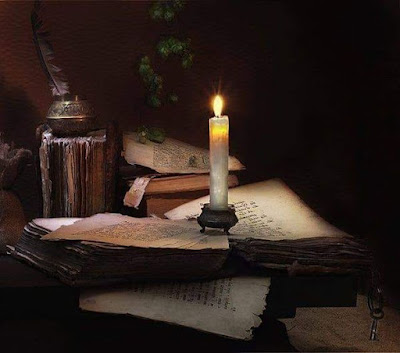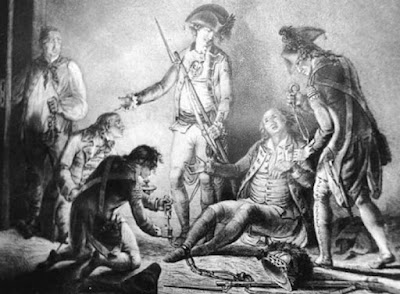The past few posts discussed spycraft—general methods of intelligence operations. While often used interchangeably with tradecraft, it encompasses a wider range of activities. Merriam-Webster defines tradecraft as “the techniques and procedures of espionage.” We will focus on specific techniques for this discussion. None are exclusive to the time of the Yankee Doodle Spies.
World’s Oldest Profession?
Spying has existed since ancient times. By the mid-19th century, nearly all nations used tradecraft in their intelligence efforts. Formal intelligence agencies were active in European capitals, especially in major cities like Paris, London, and Madrid. However, on American battlefields, most intelligence activities were spontaneous and typically overseen by the local commander.
General Washington famously took a special interest in such matters, but nearly all commanders on both sides did as well – sending out scouts, reconnaissance patrols, and spies. Some appointed officers to oversee spy networks made up of one or more agents, sometimes called assets. Benjamin Tallmadge, a major of the Second Continental Dragoons, was one such handler who led the Culper Ring in New York City and Long Island. During the Philadelphia campaign in late 1777, Washington’s agent handler was another Continental Army officer, Major John Clark.
Cover
The complexity of today’s high-tech and interconnected world makes cover activities extremely challenging. In the 18th century, when records were poorly kept or even non-existent, a simple “legend” might have been enough to protect a spy. A legend refers to a person using a fake identity or credible story to infiltrate a target organization instead of recruiting an agent in place (behind enemy lines). Nathan Hale went behind British lines in New York in 1776, using a traveling schoolmaster as his cover. Both sides used very light cover, primarily by adopting pseudonyms. Records were crudely maintained and identified, apart from letters of introduction.
In 1778, American Captain Allan McLane volunteered to spy on the British garrison at Stony Point, a fort on the Hudson south of West Point. McLane dressed as a “country bumpkin,” claiming he was escorting a lady to visit her son at the fort. He returned safely with valuable intelligence for General Washington.
Real or Concealed?
Fans of James Bond and other modern spy thrillers recognize concealment devices used to hide espionage items, messages, plans, or maps. These include gadgets like hollowed-out coins, books, or other objects. During the Revolutionary War, devices could be simple, as exemplified by British Major John Andre hiding plans for West Point’s defenses in his shoe.
A more complex plot by General Henry Clinton failed in 1777 when he sent an officer named Daniel Taylor up the North (Hudson) River to inform General John Burgoyne of his plans. The message, written on silk, was hidden inside a silver ball made to look like a musket ball. The unlucky Taylor was captured, and he swallowed the ball during questioning. His interrogators caught him in the act, and the use of emetics quickly revealed the device.
Broadcasting
In the 20th century, spies might have used a one-way voice link, a radio-based communication system to talk with agents in the field, often (but not only) using shortwave radio frequencies. Newspapers offered a similar method in the 18th century. Classified ads were a useful way to communicate. Newspapers like New York City’s Rivington’s Gazette served this role for the British and Americans.
Cryptography
The use of special techniques for secure communication dates back to ancient times. By the era of the Yankee Doodle Spies, various codes and ciphers were in use. Letters of the alphabet replaced other letters to hide the message's content. The sender and receiver must share the same key, which can be reused, or, for the highest security, a one-time pad, which changes the key with each message. Sometimes, a network might have its own template, like a book, to serve as the cipher’s key.
General Washington used a code system with numbers and letters, made famous by the Culper Ring working in New York and Long Island. For example, 38 meant attack, 192 meant fort, and New York was 727. Sometimes, harmless words were added to the message to hide the true meaning. Another secret method involved using a published book or dictionary, where a specific word on a certain page and line was used to decode the message. A familiar book or dictionary essentially hides in plain sight and isn't threatening if it gets into the wrong hands.
Steganography
The art or practice of hiding a message, image, or file within another message, image, or file is a modern high-tech activity today. However, 18th-century intelligence often used hidden messages. Usually, a real message was embedded in a book, newspaper, letter, or other cover text.
The British used a technique to hide secret messages within text by applying a paper template called a “mask.” When the mask was overlaid, the hidden message could be read. The information was arranged in an hourglass shape.
Invisible ink grew in popularity. Lemon juice was used initially, but later, a special liquid called stain enabled secret writing to be visible only to the person with the stain. Sir James Jay, the brother of Revolutionary leader John Jay and head of New York’s Committee for the Detection of Spies, invented it in London. Luckily for the Americans, Sir James secretly sent a bottle of stain to his brother, who was involved in counterintelligence activities. Washington took advantage of this new high-tech ink, often writing in the blank space between the lines of a letter or a book.
Cutouts
Espionage services used cutouts—typically someone not suspected—to pass information between agents. These cutouts had limited knowledge of the final destination or the spy’s identity, providing extra security if they came under suspicion. Colonial taverns and coffee houses served as ideal venues for this. Other places, like American spy Hercules Mulligan’s tailor shop in New York, might have played such a role.
Dead Drop
The dead drop exchange remains a espionage tradecraft method used to pass items between two people using a secret location. Dead drops enable the exchange of information while avoiding personal meetings. These are typically secret locations at remote sites (sometimes in plain sight) where notes or items are left for later retrieval. The Culper Ring used a box buried on Abraham Woodhull’s farm, where Austin Roe would deliver intelligence gained at his New York tavern.
The flip side is the “live drop,” where two agents meet to exchange items or information. The same ring used Long Island’s north shore coves as dead drops, where Caleb Brewster’s whaleboat could slip in, and he would retrieve the messages.
Eavesdropping
Today, this includes electronic surveillance, wiretaps, and cyber collection. During the Revolutionary War, eavesdropping meant secretly listening to others' conversations without their permission, often just out of sight or behind closed doors. Lydia Darragh learned of a British plan for a surprise attack on General Washington’s army, which involved observing the British garrison in Philadelphia. General Howe was using her home as his headquarters, and her proximity gave her the access needed to uncover this.
Surveillance
Monitoring behavior, activities, or anomalies is an easy yet effective technique. Surveillance was probably the most common method of gathering intelligence during the American Revolution. Pro-British Loyalists and American patriots were often mixed together and kept watch on each other, looking for suspicious or threatening actions. Scouts and patrols also observed enemy forces from afar. In 1775, Paul Revere’s spy network, known as the Mechanics, had watchers throughout Boston and the surrounding areas to report on British activities.
Front Organizations
These entities are created and controlled by another organization, such as intelligence agencies. Their goal is to avoid attribution to the organizing entity—providing plausible denial. They can take the form of a business, a foundation, or another type of organization. The most well-known of these during the Revolutionary War was Rodrigue & Hortalez et. cie, a front company established by Pierre Augustine de Beamarchais, a clockmaker and playwright who had access to the King and France’s Foreign Minister, comte de Vergennes. This trading company shipped surplus French military goods and other vital supplies to the colonies in exchange for American products like tobacco. The American fight likely would have collapsed without this covert help.
Ask Me Anything
Both sides relied heavily on military interrogation. An interrogation is a questioning technique used by police, military, and intelligence agencies to obtain valuable information from uncooperative suspects. Interrogation involved various methods, from building rapport with the subject to asking repeated questions, sleep deprivation, or, in some countries, torture. Both sides also dealt with deserters who willingly provided military secrets during the Revolutionary War. The most brutal interrogations occurred during the internal conflict between patriots and Loyalists. This civil war within the American War of Independence was characterized by aggressive and merciless questioning of prisoners.
Black Chamber Operations
Intercepting diplomatic correspondence from Europe in the early 18th century often involved hijacking postal services. During the American Revolution, both sides used similar secret methods by intercepting mail carried along regular postal routes, express riders, or couriers. These actions were usually kept secret, with letters carefully resealed and stamped. Washington and the British in New York City widely used this tactic, hijacking couriers and messengers. Since patriots and Loyalists lived among each other, there was no shortage of people willing to take part in such risky activities.
During the start of the Yorkton campaign in 1781, General Washington used intercepted messages from British General Henry Clinton’s New York garrison by planting false information that was allowed to fall into enemy hands. The report helped create a false story – an upcoming invasion of New York. This operation enabled the French and Americans to gain an advantage over Clinton as they moved south to Yorktown and claimed victory.

Surveilling Yorktown















.jpg)
.jpg)


No comments:
Post a Comment